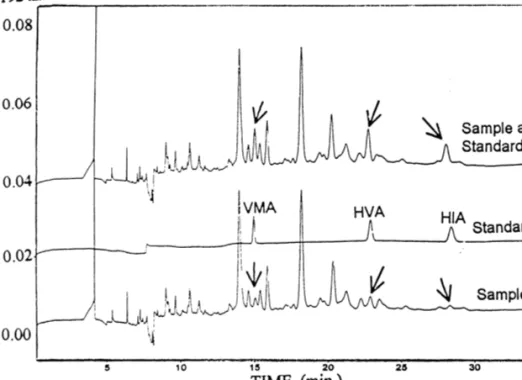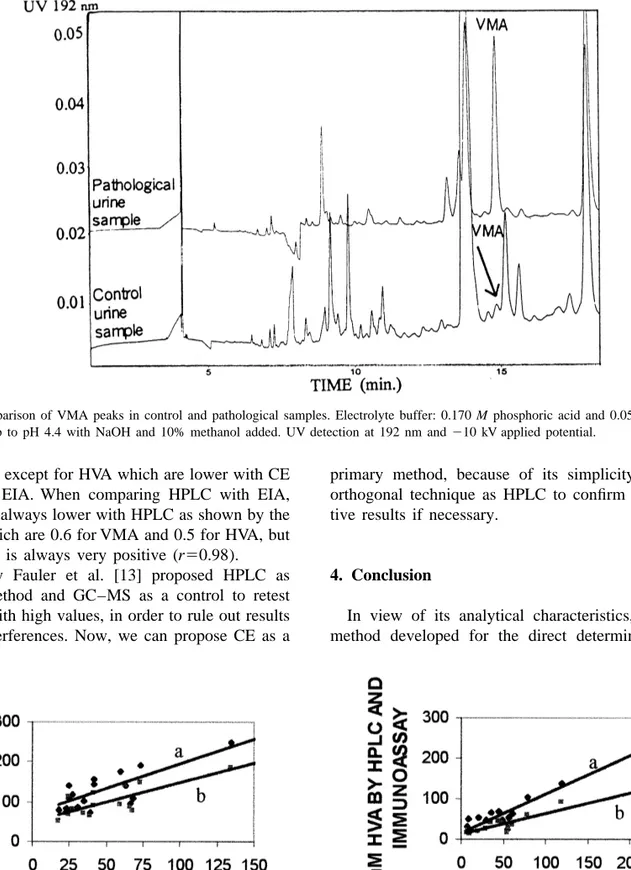Direct measurement of homovanillic, vanillylmandelic and 5 hydroxyindoleacetic acids in urine by capillary electrophoresis / C Barbas [et al ]
Texto completo
Figure




Documento similar
Four identification and quantification techniques, including liquid chromatography (LC) separation coupled to (i) a diode array ultraviolet (UV(DAD)) (ii), mass spectrometer in
At the same time, higher values of the quantum efficiency were found in the photocatalytic degradation of phenol, methyl 4-hydroxybenzoate and 4-chlorophenol with P25, whereas in
The Dwellers in the Garden of Allah 109... The Dwellers in the Garden of Allah
Herein, we have pur- sued the identification of potential biomarkers in plasma samples and skin biopsies that could define the phenotype of CMT1A patients at mild (Mi), moderate
Confirmation of these in vitro metabolites via the analysis of authentic samples (especially urine) has proven the suitability of the different in vitro strategies
Alternatively, the allocation of attentional resources from a limited pool could occur at distinct points in time for target detection and perception of a blurry word, which
Figure 5 shows XAS spectra, obtained in the TEY mode at the region near the oxygen 1s absorp- tion edge, of samples grown with different plasma oxygen contents, taken at
The main objectives of this work were: (1) to compare the dynamics of fitness gains at 43 ◦ C and the fitness values that were reached at the end of the transfer series, and

